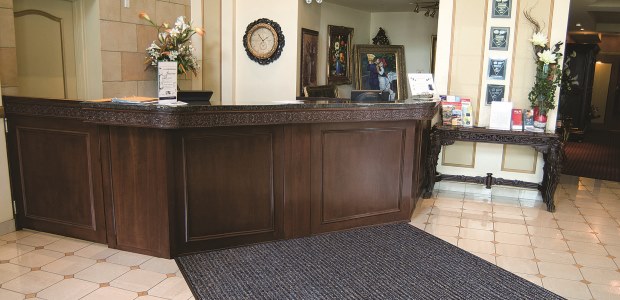
Mats and Sustainability: The Connection Is Closer Than You May Think
If entry mats help keep hard-surface floors and carpets cleaner, longer, then it can be assumed that not only are fewer cleaning solutions needed, but there is also less need for heavier cleaning equipment such as floor machines and carpet extractors.
- By Adam Strizzi
- May 11, 2016
In 2009, the U.S. Green Building Council updated its LEED certification requirements. The council no longer offered a credit for those facilities that installed an entryway mat system. Instead, high-performance entry matting became a requirement for a facility to be LEED-certified.
According to the standard, "permanent entryway systems [such as mats] that capture dirt and prevent particulates from entering the building are ... to be installed at all regular building entry points." Further, "the systems [must be] at least 10 feet long (as measured along the primary direction of travel) and are designed to be in place immediately inside the required entryways."
The reason for this change is simple: Mats help keep facilities clean. Less soil, dust, moisture, and other contaminants are walked in when mats are in place. This means the facility will likely need less cleaning, and less cleaning reduces cleaning's impact on the environment. However, what we are realizing now is that entry mats promote sustainability in a number of other ways, as well. So we are all on the same page: We are using the original definition of the word "sustainability" here, which means the use of natural resources in a responsible manner today to help ensure they are available for future generations.
So how do mats promote sustainability? Here are just a few of the ways:
Reducing the use of cleaning solutions: As we know, entryway mat systems help keep facilities cleaner, reducing their cleaning needs. This means that fewer cleaning solutions, often made from water, petrochemicals, and non-renewable resources, may be needed; fewer cleaning chemicals need to be packaged and transported (using fuel and releasing greenhouse gases) to distribution and customer sites; and with fewer containers delivered, less cleaning-related waste ends up in landfills.
Protecting floors: Hard-surface floors become soiled when contaminants and moisture are walked into a facility. Even with regular cleaning, this soil and moisture slowly starts degrading the floors. Eventually, the floors must be replaced. The most common type of hard-surface floor installed in a U.S. commercial facility is vinyl composite tile (VCT). These tiles are made using a number of chemicals and non-renewable petroleum-based additives, as well as non-renewable heavy metals. When removed, the tiles end up in landfills, where they can take decades to decompose. An effective entryway matting system helps prevent this soiling and lengthen the life span of hard-surface floor.
Protecting carpet: Just as entry mats protect hard-surface floors, they also protect carpet so that it stays cleaner and lasts longer. Carpet is usually made from synthetic fibers, such as nylon, which are produced from petroleum, a non-renewable resource. Petrochemicals also are used in the production of the carpet, requiring large amounts of energy and water. In fact, it takes more than 10 gallons of water to manufacture just one square yard of carpet. As to waste, more than 3 million tons of old carpet end up in landfills every year, where they also can take years to degrade. The longer a carpet stays effective, the fewer natural resources are necessary to manufacturer it and the the less impact it has on the environment.
Reducing the use of cleaning equipment: If entry mats help keep hard-surface floors and carpets cleaner, longer, then it can be assumed that not only are fewer cleaning solutions needed, but there is also less need for heavier cleaning equipment, such as floor machines and carpet extractors. Some of these machines are similar to small compact cars. To manufacture and maintain them requires all types of metals, petroleum products, chemicals, water, plastics, and other materials, all of which can be minimized with proper and effective entry matting installed.
Preserving indoor electronic equipment: Dust, which typically is walked into a facility when no or improper mats are installed, can become airborne and cause significant damage to office electronics, such as computers and fax machines. The problem is that the dust starts blocking the exhaust fans on these machines. This can cause the machine to overheat, require more energy to operate, and reduce its life expectancy. If the dust contains moisture, it can also cause corrosion.
Reducing energy consumption: Just as dust buildup can block fans in electronics, if it is allowed to build up in HVAC units, it will infiltrate vents, cooling units, and electrical components. This reduces the efficiency of the equipment and causes it to use more electricity. As the buildup continues, it can also damage the equipment and reduce its life span.
We should note that not all types of entry mats will provide all of these sustainability benefits. Building managers are encouraged to select what are called "high-performance" mats. We mentioned this earlier. As the name implies, high-performance mats perform more effectively than traditional matting systems. But because they are high performance, they also last much longer, once again helping to promote sustainability.
About the Author
Adam Strizzi is vice president of marketing for Crown Matting Technologies, one of the oldest and largest matting companies in the United States. He can be reached via his company website at www.crown-mats.com.